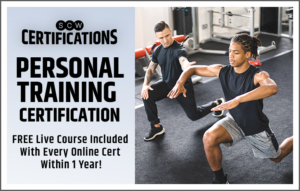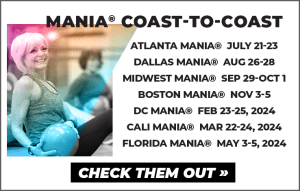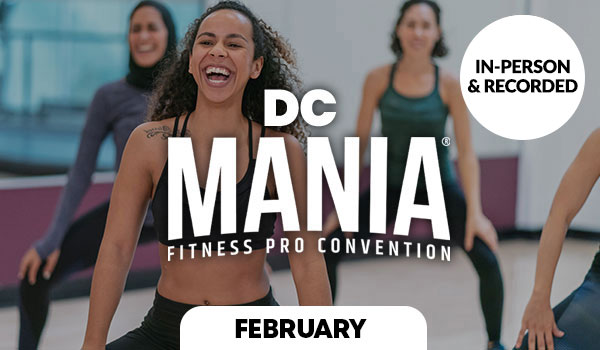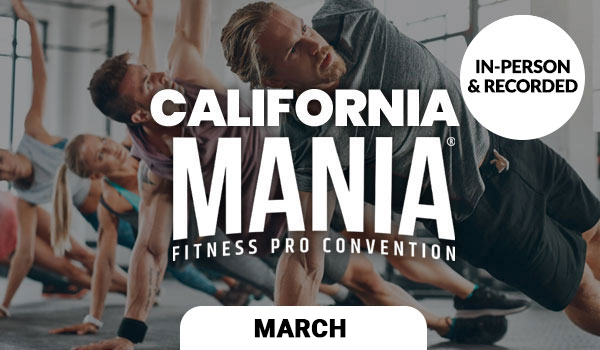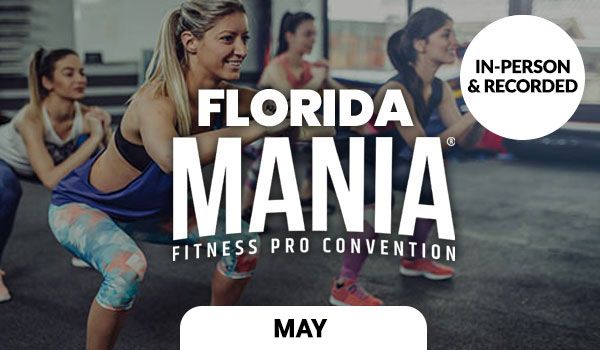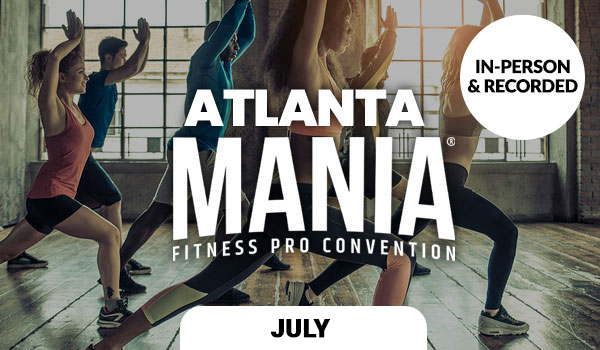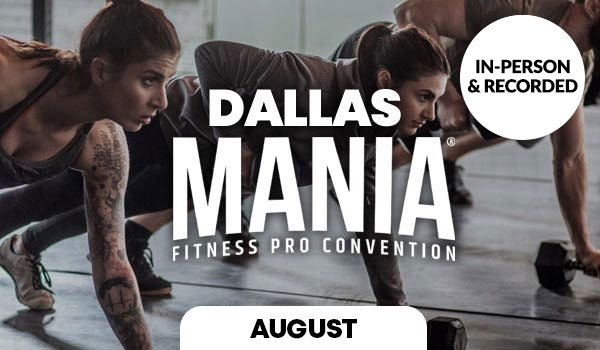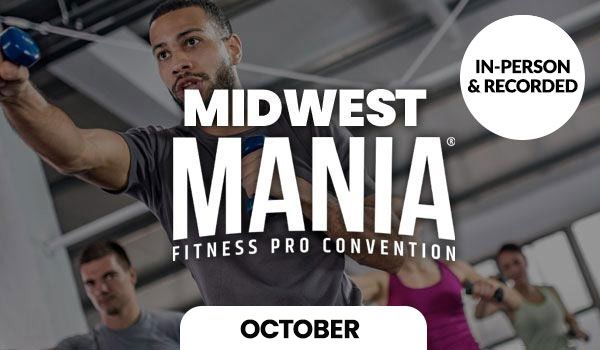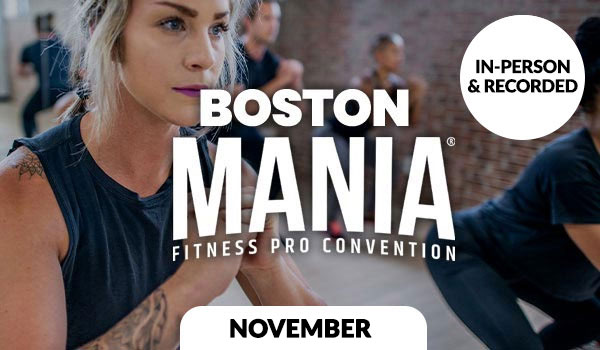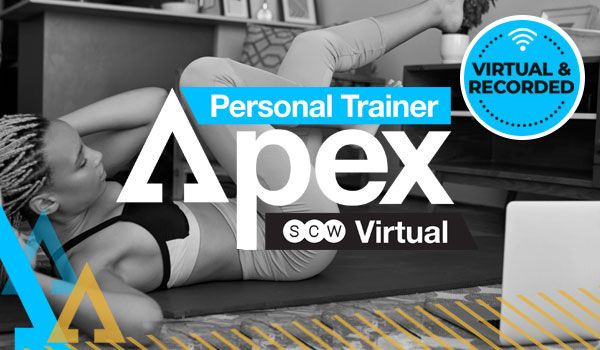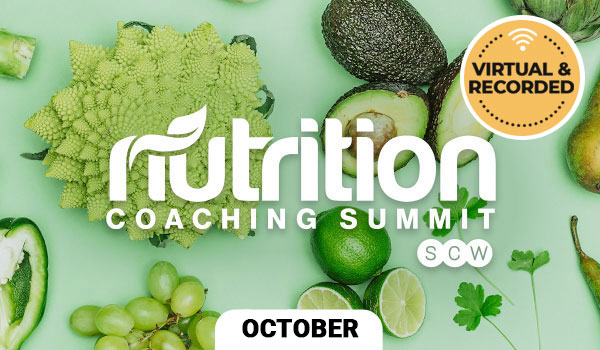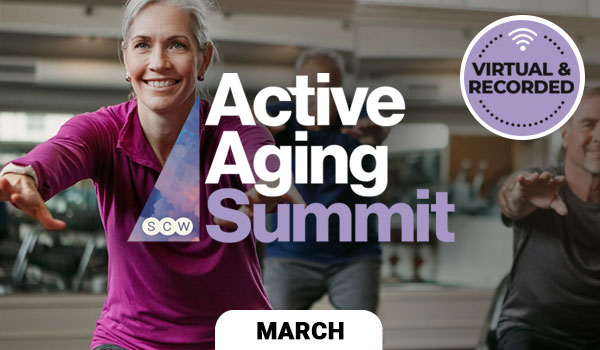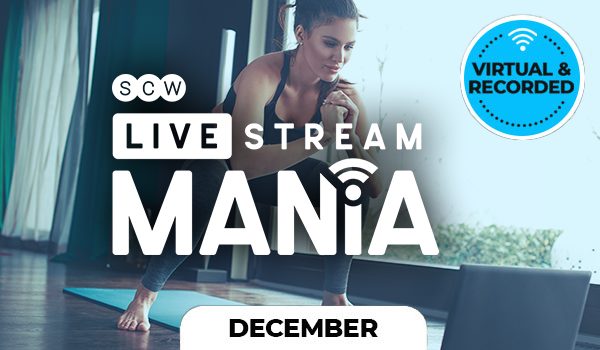
SCW Spotlite: Issue 57

Create Exceptional and Inclusive Experiences Through Coaching & Cueing
When we create an environment for our clients to feel welcome, appreciated, represented, valued, and heard we clearly know we are addressing diversity and inclusiveness in our services. All industry indications point towards increased market penetration and revenue growth. That said the majority of potential exercisers still lack the motivation to initiate and sustain an exercise routine and much of this is rooted in the potential lack of perceived competence and sense of belonging. This narrative penetrates many cultural lines that include race, gender, ethnicity, disability, age, socio-economic status, and overall experience. As personal trainers, instructors, and coaches we are in a unique position to make a difference to lift the veil of representation. This is not just done in management, marketing, staffing, and onboarding, but through the way we actually coach in live settings. The ability for instructors to embrace and execute coaching actions and language can be an absolute game changer for increasing the likelihood that people feel like they belong. In this article I will provide three tips you can consider whether you are a private one on one Personal Trainer, Small Group Personal Trainer, or Group Exercise Instructor to create exceptional and inclusive experiences through your coaching and cueing.
Achievable language
The first thing to consider is using coaching language that allows your client or class to feel that what you are asking of them is both achievable and comes with choice. It is well documented that intrinsic motivation is highly impacted by an exerciser’s perception that they have a choice in their experience. This may include options, regressions, correctives, load, rest intervals, and more. You can imagine the old school drill sergeant instructor who forces the class to push beyond their capacity. Many of us may perceive this as a good thing. The downside is that this will satisfy the motivational needs of the few. Most new exercisers, or those who prioritize a sense of achievement through completion, will feel like they are failing unless their exertion matches their perceived expectations set by the coach. Encourage clients to choose loads and progressions that give them ownership session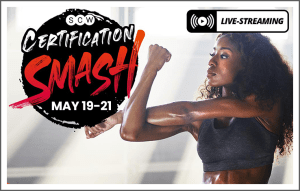 by session. Give permission to members to push at their own version of scaled exertion during vigorous exercise and praise their choice and effort. As a coach if you want to create a culture that encourages inclusion and equity this is a powerful tool to practice.
by session. Give permission to members to push at their own version of scaled exertion during vigorous exercise and praise their choice and effort. As a coach if you want to create a culture that encourages inclusion and equity this is a powerful tool to practice.
It is also a great best practice to use coaching language that helps clients recognize their level of competence in the moment versus the long term. An example of this may be to cue a client through proper alignment in plank for a programmed time. You may offer clear praise for their effort, and bring to light how this may translate into their next session by adding a slight progression. This can also be achieved by praising effort and micro-progressions in execution of an exercise bout versus the end result or a potential goal that may be reached months from now. Your ability to coach and cue small wins in the moment will increase your clients desire to return due their increased sense of competence. As a coach if you want to create a culture that encourages inclusion and equity this is a powerful tool to practice. More clients will feel a sense of achievement and motivation regardless of their background and experience.
Community
The second tip is to proactively create community within your classes or client roster. It is only natural that we as human beings have a desire to want to be accepted and be around people who truly care about us. A great coaching tip is practice using language that draws people into the unified experience versus their own isolated experience. Of course, we want to remember names, introduce people, create social groups, and the like. There is another layer of the onion to peel here. This is an especially powerful tool in small group sessions, large team sessions, or group fitness classes. Expressing the peaks and valleys of the workout experience with words like “together”, “we can/we are”, or “with someone next to you”, will trigger feelings of belonging. If private one on one training is your thing you can certainly still create this with client team stream calls to share experiences, creating social media groups with your roster, and social events.
The third tip is to learn and apply the basic soft skills of tone. Not the type of tone that means a sculpted six pack and arms! What I reference here is the use of language, imagery, exercises, and interactions that celebrate uniqueness and does not further isolate marginalized groups. There are a significant number of resources on how to improve tone without feeling like one must be “tone policed”. For the sake of keeping this article simple and applicable let’s lay out two simple things. The first is to be cognizant of using language that exacerbates a stereotype. This may include highlighting the quality of performance based on ethnicity, age, or experience. In contrast, a coach can simply encourage effort, engagement, and focus on being authentic.
The second is to be mindful that we want to be clearly understood and followed as fitness professionals. We need to speak clearly, demonstrate patterns, articulate our words, and confirm our clients understanding of the exercises. While this may sound this skill is a win, it’s critical to have the emotional intelligence to avoid sounding condescending or patronizing in the attempt to be too clear. A best practice here is to be aware and sensitive about your delivery. Be willing to ask for and accept feedback. If there are any small nuggets of behavior you can apply one step at a time, give it a try!
We are very fortunate to be in an era where more consumers are looking for opportunities to move to improve their health. We all have our niche that we serve to our target market, but we can create a massive change in our industry by keeping diversity, equity, and inclusiveness at the forefront of our model. Not just our business model, but our coaching model as well
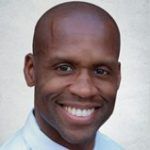 About the Author: Sheldon Mcbee, MS
About the Author: Sheldon Mcbee, MS
Sheldon holds a Master of Science degree in human nutrition. He is Executive Director at Universal Athletic Club and is an ACE certified Personal Trainer and Group Fitness Instructor with over 19 years of experience in health and fitness. Sheldon is an experienced international presenter, lecturer, educator, business consultant, and fitness content developer. He has presented at IHRSA, IDEA, Canfitpro, MACMA, SCW, and other industry conferences. Sheldon has been featured in numerous industry publications and sits on the Canfitpro and Club Solutions Magazine Advisory Panel.

The Art of the Warm-Up
Logically, one wouldn’t jump onto a treadmill and burst into a sprint (or what qualifies as one for us “active agers”.) You also wouldn’t walk up to a bar and bench press or squat with a heavy weight. But the “hows” and “whys” of a warm-up are separate issues, adroitly explained by Instructor Adam Clark in the SCW Fitness CEC Course, “The Art of the Warm-Up.”
Adam, owner of the Adam Clark Training Studio in Brewer, ME, breaks the warm-up into four elements.
- Increase the heart rate and prep the cardiovascular system.
- Work joints through their range of motion.
- Prep for the movements to be done in the activity.
- (Importantly) prep the body and mind.
As an Exercise Physiologist with a mellow, New England vibe, he feels that the warm-up should have an element of fun to it, such as Partner Drills, which can include a ball toss while balancing on one leg or other “games” that work on hand-eye coordination, improve stability and agility, and fire up the brain.
Individually, he swears by the foam roller (as do I), for both warm-up and cooldown. Work the roller from the top of the body and concentrate on the muscles, not the joints. Spend about 30 seconds on each area and then go back to work on specific problem spots. Benefits include:
- Myofascial release.
- Break up of scar tissue.
- Increased blood flow to specific regions.
Personally, I like to do bi-lateral movements initially on my lower body, and then move to each individual leg. This can easily be done for hamstrings and calves, and (quite painfully), laying forward on a roller for the quadriceps. Foam rollers come in various densities and with smooth or rigid surfaces, so experiment with what is most comfortable and effective for your individual needs.
Part of a trainer’s job is to visually assess and address problem areas. Slumped shoulders, inverted knees, and tight hips are common problems, but there are others, particularly for people who sit all day, or have had injuries or broken bones.
To that effect, Mr. Clark’s suggestion for corrective exercises may be things like
- Squats with a loop band around legs.
- Wall slides
- Hip extensions (there are so many variations of this one!)
- Ankle mobility drills (forward and back, side to side, circles).
Dynamic warm-up drills (think middle-school gym class) could include:
- Jumping jacks or flap jacks (arms in front of body)
- Walking lunges.
- Jump rope.
- Planks with arm or leg movements (gliding disks are great for these movements!)
Finally, “power” warm-up movements get the body primed for a heavy squat, deadlift, or bench. These exercises prime the central nervous system and take-out stress. Think outside the box with kicks or punches to a heavy bag, or my favorite, overhead medicine ball slams.
As you can see, some of these things are quite strenuous in their own right. In Mr. Clark’s classes (mostly filled with middle-aged clients), about 20 minutes of a 50-minute group session are devoted to moves that would loosely be described as warm-up activities. Just in and of themselves, it can be considered a very effective workout!
Personally, I like watching the warm-up drills of professional sports teams and top individual athletes like Olympic runners or professional tennis players. There’s always a mix of power activities, coupled with both dynamic and static stretching. They are usually hyper-focused, often with earphones on, but also engage in some light-hearted banter with others to keep from getting too “mentally tight.”
For us “regular folks,” don’t rush into an all-out activity at the gym, and don’t settle mindlessly into walking five minutes on the treadmill before engaging. Be creative, get your mind and body going, and have some fun!
“The Art of the Warm-Up” is just one of dozens of online CEC Courses available on the SCW Fitness website. Courses can be purchased individually starting at $29.95 or as a bundle. Right now, take advantage of a 20% savings with code SUPER. Also don’t miss out on the 50% off Equipment Sale with dozens of items at half off of retail stores. For more information about SCW Fitness and SCW MANIA® visit the website at www.scwfit.com.
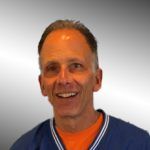 About the Author: Ed Halper
About the Author: Ed Halper
Ed has been a member of SCW since its inception, and currently holds four Certifications in Personal Training and Nutrition. He and wife, Laurie, were the proprietors of Mountain Fitness in Warren, NJ, from 1998-2018, and he still is employed at the site as a Fitness Trainer. Ed earned his B.A. from Monmouth College (now University) in 1980, where he participated in cross-country and track and served as head coach afterward. He pursued his love of fitness with a master’s degree in education (concentration in Phys Ed) from Trenton State College (now College of NJ) in 1991. Ed, an active road runner with a marathon best of 2:43.06, has worked in the fitness field for over 35 years. He and Laurie are proud parents to two grown children, living in Washington, DC, and Boston. (The site of two SCW MANIA which give him a great reason to visit!) Ed’s fitness and nutrition articles can be found on the Mountain Fitness Facebook page. He can be reached directly at [email protected]

4 Body Strong: Health for the Full Body
When you think of yourself as “healthy” what comes to mind? Is there an ideal image that you see in your mind’s eye? Do you have a specific weight that you immediately consider to be your “ideal” weight? Did aesthetic and cosmetic appearances cross your mind? Or did you consider the medical diagnosis you received eight years ago? Do you think of the four pills you’re dependent on for survival? Health is much more than physical appearance or diet and exercise for example. There are multiple aspects of you as a healthy being: physical, mental, emotional, and spiritual. Overall health is like the four tires on a car, if one tire is flat, it’s still not moving! Let’s explore how to organize the “4” dimensions of you.
Physical Health
When considering the physical aspect, this includes exercise, proper rest, nutrition, and diseases/ailments.
Daily exercise is vital to overall health and well-being. Movement is as simple as walking 30 minutes a day. Any daily activity can be included.
Rest and sleep are a must. The body can go months without food however the max the body can go without sleep is 10 days! Sleep is the body’s way of healing and fighting disease. Through sleep cycles, the body heals itself.
It’s no secret our nutrition plays a major part in our moods and our ability to think clearly. In addition to mental and emotional health, the foods we eat also impact our functional health. As the saying goes “an apple a day keeps the doctor away.” Foods have energy frequencies that affect our spiritual connections as well. Proper diet can change our overall well-being and improve our quality of life.
**Scientific Alert** Ailments are the result of our organs not functioning normally. These conditions result in many side-effects such as weight loss/ gain, mood swings, skin conditions, sleep disorders, and mental health issues. Most disorders require a diagnosis from a licensed professional or specialist and are typically coupled with treatments such as medications and surgeries.
When a diagnosis has been given, it is imperative the individual learn as much as they can about the ailment. When doing so, this allows for overall well-being and health, in addition to an understanding the root cause of the issue and not the symptoms that it creates. For example, if an individual has an infirmity related to their thyroid gland, one of the symptoms could be weight gain. At this point, it is important for that person to focus on repairing the damaged organ, not on losing weight, because weight gain is a symptom of a dysfunctional thyroid.
Key thought: Wellness is not a stagnant place; you’re either headed towards wellness or you’re headed towards illness.
Tips to Improve Physical Health:
- Follow the additional tips in this article
- Consume a healthy diet that includes fresh fruits and vegetables
- Drink plenty of water
- Limit caffeine and artificial sugar consumption
- Exercise daily/Get Active
- Limit screen time
- Go outdoors/Get some sunlight
- Get the proper sleep daily
Emotional Health
What do happiness, anger, sadness, fear, disgust, and pleasure all have in common? They are all emotions or feelings that are induced by a chemical in the mind. The unhealthier an individual is mentally, the more they are unhealthy emotionally. Thoughts create actions and actions create results. Keep in mind emotions also store in different areas of the body such as the muscles and organs.
Emotions are mental states brought on by neurophysiological changes, variously associated with thoughts, feelings, behavioral responses, and a degree of pleasure or displeasure. An individual’s mental health directly impacts their emotional health however emotional health doesn’t always impact mental health. A person can be unhappy emotionally however they may not have mental dysfunction, it could just be a bad day. On the contrary, if an individual suffers from anxiety, which is a mental disease, they may have a lot of emotional fear as a result.
When discussing emotional health, we must take a look at the scientific response the body is creating. **Scientific Alert** An approximation of the process the body goes through when creating emotions takes roughly 90 seconds. A memory is triggered through 1 of the 5 senses, the stored memory re-occurs in the mind, the mind releases a chemical to promote the intended response of the memory, at which point the emotion occurs.
Here’s an example: Step 1: (trigger-sense of smell) You walk in the kitchen and smell apple pie, Step 2: (stored memory recall) it reminds you of your grandmother’s apple pie she would make every Sunday, Step 3: (happy hormone chemical released) You think of all the fun times you share with your grandmother!
As you may notice, we have full control of our emotional responses, the same example could lead to a negative hormone release if grandmother is deceased. It’s often questioned why it’s difficult to improve emotional health if this process only lasts 90 seconds! The issue is the 90 seconds is replayed over and over again, prolonging the emotional response.
Key thought: The only reason you’re unhappy is because life is not happening the way you think it should happen.
Tips to Improve Emotional Health:
- Do things that bring you joy and excitement
- Read, grow, and learn daily
- Govern your thoughts (pay attention to how you think and what you say aloud)
- Understand you have complete control of your emotions
- Follow the additional tips in this article such as healthy eating, daily exercise, and daily spiritual practices
- Surround yourself with positive influences
- Develop a new hobby
- Love yourself (don’t be your own worst critic)
- Practice daily affirmations and positive self-talk
According to the World Health Organization (WHO), the global prevalence of anxiety and depression increased by 25% in the first year of the pandemic. Services for mental, neurological, and substance use conditions were the most disrupted among all essential health services.
Mental disease is a “silent killer” out of the four bodies! The word disease broken down is Dis-Ease, not at ease. If your mind and/or body is diseased, it is not at ease. The mind is not at ease and the results range anywhere from loss of sleep, appetite, suicide ideation, medical diagnosis, daily dysfunction, and much more.
Many individuals aren’t aware they’re suffering from mental health diseases, most require a medical diagnosis such as bipolarism, schizophrenia, body dysmorphia, anxiety, depression, PTSD, Bulimia, Anorexia, Dissocial disorders, and others.
Key Thought: Your thoughts lead to your actions; your actions lead to your results
Tips to Improve Mental Health:
- Seek the help of a licensed professional (please note counselors and therapists are healing “facilitators”, they do not possess a “magic pill” that’ll “fix” you, they’re goal is to start the healing process and you must continue doing the work to heal)
- Follow the additional tips in this article such as healthy eating, daily exercise, and daily spiritual practices
- Do not abuse recreational drugs and/or alcohol (these substances only exacerbate the issues)
- Read, learn, and grow daily
- Surround yourself with positive influences
- Do things that bring you joy and excitement
Spiritual Health
Joy, Peace, Alignment, Meditation, Spiritual health put in its simplest form is fulfillment; pleasantness within and pleasantness around. Some people believe in supreme being or higher power which is referred to by many names such as God, The Creator, Allah, Jehovah, The Most High, Shiva, Source, Energy, The Universe, etc. Some believe in their eternal highest form of self as “God”. Either way, it is an energy, vibration we all experience, in all things. When we are connected to that energy field, we are better individuals. As human beings, we all desire similar things in life such as health, peace, joy, pleasure, love, and compassion. When we develop a practice that creates our individual worlds to be such things, we experience a pleasant and fulfilling life as a result.
- A healthy spirit creates blissfulness and ecstasy
- A healthy body creates pleasure and good health
- A healthy mind creates peace and joy
- A healthy emotion creates love and compassion
Key Thought: You have the power to create your own reality.
**Remember: Everything starts in your mind! Scientific reaction coupled with a spiritual state.**
 About the Author: Brittainye Wise
About the Author: Brittainye Wise
Brittainye is a licensed physical therapist assistant, professional dancer, certified group exercise instructor, certified personal trainer, certified life coach, neuro-linguistic programming specialist, and licensed business owner. She started her first business in 2003, group exercise in 2006 and obtained her degree in Physical Therapy. Brittainye has taught Silver Sneakers, Silver-N-Fit, Arthritis Foundation, Zumba, U-Jam, and Line Dancing. She developed a unique style of teaching through her private company, Wise Moves Dance. Contact me at www.kinestherapy.com

Energy Gels: What They Are and How They Can Help You Perform Like a Champ
by Matthew Kadey, MS, RD
These days, there is no shortage of products that are designed to help keep us fueled during our athletic pursuits. From energy bars to sports drinks to chews, there are many options for gassing up the engine. Another prominent option that is popular with athletes of all stripes are so-called ‘energy gels.’
If you’re a long-distance runner, cyclist, or any kind of endurance athlete, you may have heard about and likely used the gooey nutrition. For many athletic-minded individuals, energy gels are part of their sports nutrition strategy. But what if there was a better option to fuel your athletic pursuits?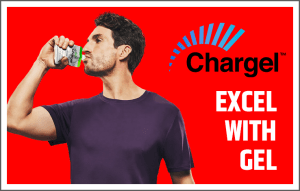
What are these products and what is the best way to use them? And where can you improve upon your standard gel? Let us explain.
What is a gel?
In simple terms, an energy gel is a product with a gel-like texture that is designed to provide a burst of carbohydrate energy during endurance exercise like running or cycling and, in doing so, help evade the dreaded bonk. For the most part, they are made from a blend of easy-to-digest simple carbohydrates like the dextrin and sugar you’ll find in a Chargel gel drink that allows you to get the most out of your workouts and races. And they are typically more concentrated in carbohydrate calories than sports drinks and energy chews. Products are designed to be free of fat, fiber, or protein – so your body digests them quickly and there is less risk for GI distress when you are trying to push the pace. Simple to consume, not filling, and easily digestible. Exactly what you want in a sports fuel.
Other ingredients can include B vitamins, amino acids, and salt. Most products, including Chargel, come in small, take-anywhere packets, which make them convenient and easy to consume before and/or during a long-distance physical effort.
How does a gel drink like Chargel work?
When you exercise vigorously, your body draws on carbohydrates in the form of glycogen stored in your muscles as the primary source of energy. However, this vital energy source is fleeting and can be depleted quicker than one would like. when pushing a moderate pace. That is where sports nutrition products like gels and gel drinks come to the rescue.
The fast-acting carbohydrates in gels function to help keep blood sugar levels from dropping too low and delay draining precious stored glycogen during exercise in longer endurance and an added performance benefit. The simple carbohydrates can be metabolized quickly when working your muscles, giving them a useful energy source when pushing the pace. Keeping blood sugar elevated during exercise could also brain function, resulting in improved mental performance such as concentration and reaction time. To note, your brain relies on the sugar in your blood as its preferred energy source.
Now, the unique benefit of Chargel is that it comes bundled with additional liquids that you won’t get with your standard energy gels. This serves three purposes:
- It improves texture making it easier to swallow when you are on the go
- It dilutes the sugar concentration, which results in improved digestion rates for quicker energy and less risk of stomach woes. Many athletes will experience what is not-so-lovingly called ‘gut rot’ when they take in too many regular gels and don’t wash these down with enough water.
Who should use gels and gel drinks?
Runners, cyclists, cross-country skiers or anyone who exercises continuously for lengthy periods can benefit from the near instant, pick-me-up, energy rush that a gel-like product such as Chargel can provide. Additionally, new research that even those who opt for resistance training can see improved results by consuming a source of fast-acting carbohydrates when performing long workouts.
How to choose the best product?
For more efficient absorption, look for gel brands that have two different forms of simple carbohydrates. This for different sugar transporters to function in the body making it easier for you to absorb a higher level of carbs and, in turn, burn more of them for energy. This is why Chargel includes both dextrin and sugar as their carbohydrate sources.
Many gels also offer some sodium, which becomes crucial when you are working up a serious sweat. While B vitamins such as don’t directly provide energy themselves, they could be a useful addition to a gel because they’re needed for cells to break down carbs for energy.
Of course, you’ll need to choose a product that you enjoy consuming. If you bring along a flavor that does not please your taste buds then it’s less likely you will use it and that is not conducive to achieving brag-worthy results. Luckily, you can now find some new products on the market that are different from other existing gels, with a more refreshing and unique texture and taste.
On a final note, always keep in mind that if you’re an endurance athlete training for competition, you need to devise a fueling strategy that works for you and practice it during your training regimen before race day.
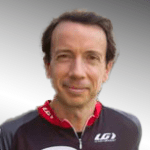 About the Author: Matthew Kadey, MS, RD
About the Author: Matthew Kadey, MS, RD
Matthew “Matt” Kadey is a registered dietitian based in Waterloo, Ontario, Canada who specializes in nutrition pieces and recipe development. Matt is a contributing health writer whose pieces and photography has appeared in a range of online and print publications such as Men’s Health, Women’s Health, Runner’s World, Clean Eating and more. His work in food journalism earned him a James Beard Award in 2013. You can learn more about Matt by going to www.matthewkadey.com

Yes, Doctors Can Fat-Shame
by Shirlene Obuobi, MD
Courtesy of Washington Post
At her next appointment, she is crestfallen and withdrawn. She has gained seven pounds. I print out packets with information on the Mediterranean diet, and she glances at them, defeated. Sensing her hesitation, I suggest that we start her on metformin, a medication used to treat prediabetes, but she declines. “Weight loss is hard,” I say.
She doesn’t return to my clinic after that.
I think often about how I failed that patient, how physicians fail patients like her all the time. The training that I and most other physicians have received dictates that weight loss is as simple as calories in, calories out; eat less, move more. The underlying message, delivered to halls full of mostly thin medical students, is that weight is a matter of willpower, something that fat people evidently lack.
I am considered midsize, but I have a body mass index (BMI) that marks me firmly as a part of the roughly 70 percent of Americans who are overweight. Even I remember ducking my head in shame during these lectures, which rarely touched on the truth: that weight gain is governed by hormonal and metabolic dysregulation often out of patients’ control.
The truth is, doctors aren’t taught much about nutrition or weight management, and the lack of education means that the fatphobia that persists outside the clinic is amplified within it.
And the consequences are dire: In my short time as a physician, I have taken care of several patients who went to their doctors with symptoms that warranted a standard work-up, but instead they were dismissed and told to lose weight.
By the time I saw them, whether in the emergency room or the clinic, their symptoms had usually progressed. One patient who was told to lose weight after complaining of shortness of breath actually had blood clots in her lungs. Another overweight patient with stomach pain was found to have inflammatory bowel disease.
The doctors they had seen had paid more attention to the number on the scale than their symptoms, and now they had complications or were traumatized by extended delays in their diagnoses.
Obesity is attached to significant discrimination. Studies show that doctors treat overweight patients differently, often perceiving them as less adherent, less motivated and, in all, less deserving of empathy.
Over the past few years, I have made an effort to educate myself by reading books and following social media accounts that discuss body neutrality and fatphobia. I found myself facing the same truth over and over: that many people with obesity associate doctors’ visits with great harm.
A friend who got access to her childhood medical records learns that her beloved physician needlessly described her as “pudgy” in a note. Several accounts discuss avoiding doctor visits on purpose to avoid being dismissed and repudiated for existing in their bodies.
Among them is Susanne Johnson, a nurse practitioner who describes herself as a “fat-positive harm reductionist.”
“The medical establishment loves to equate weight gain to poor health outcomes, yet never seems to consider what it is like to be on the receiving end of that,” she says.
She describes the consequences of fat-shaming in medicine, such as how implying that chronic illness is always a function of weight can send a person into a “shame spiral that detracts from the goal of actually treating them.” It also makes it less likely that they will return for ongoing care, she says.
For patients who have obesity, navigating doctors’ visits can feel like navigating a minefield. First and foremost, patients should feel empowered to question routine weigh-ins at appointments, which are often stigmatizing. There are certain conditions for which tracking weight is important and has little to do with weight-loss management, and in those cases, shared decision-making can be employed.
Second, patients who want to lose weight should ask their doctors about options, including new medications that, in some cases, can be covered by insurance. These drugs, known as GLP-1 agonists, have been shown to have additional benefits regarding diabetes, as well as kidney, cardiovascular and liver diseases. If doctors are not knowledgeable about weight-loss options, ask for them to do some research or seek a referral.
Third, no patient should be dehumanized during interactions with a health-care team. Should patients feel judged or as if their medical care is being unduly influenced by their weight, they should try to find more empathetic care elsewhere.
And finally, we as a society — as well as doctors and even patients — must stop framing obesity as an issue of willpower.
I only learned about the complexities of weight management after starting my cardiology fellowship, four years after graduating from medical school.
Silvana Pannain is an endocrinologist and the director of Chicago Weight, a weight-loss program and support group at the University of Chicago Medicine. As part of my elective in cardiovascular prevention, I rotate through her weight-management clinic.
When I describe a patient as “obese,” she gives me the verbal equivalent of a rap on the wrist. “They have obesity, they are not obese,” Pannain chides.
“Obesity,” she later explains, “is the new hypertension.” Like hypertension, it is a complex, chronic, relapsing, progressive condition that is associated with, but not dependent on, lifestyle, a definition that has been supported by multiple prominent medical associations such as the Centers for Disease Control and Prevention, the American Medical Association and the Obesity Medicine Association.
Even before meeting Pannain, I knew I needed to change my approach to caring for patients with obesity.
In my final year of internal medicine residency, I met a patient who asked me for help managing her high blood pressure.
The medical assistant for my clinic informed me, with some annoyance, that the patient had declined a weigh-in before the visit.
But instead of insisting that she get on the scale, I used this as a springboard to connect with her. She described herself as fat and told me outright that she didn’t want to discuss her weight.
Instead, we talked about her sleep quality, healthy foods and additional physical activity that could keep her from needing additional blood pressure medications. Given my limited education on nutrition, I also referred her to a dietitian.
Over the course of the year, my patient went from not being able to walk more than two blocks to doing four laps a day around a track. By respecting her autonomy and not pathologizing her body, I was able to help her work toward a better quality of life.
Shirlene Obuobi is a second-year cardiology fellow at University of Chicago medical center. Her comics about navigating health care appear on her Instagram @ShirlywhirlMD. She is the author of “On Rotation,” a novel about a Ghanaian American medical student.
Please find the original article HERE

You Are What You Eat (and Absorb)
“You are what you eat” is a popular saying . . . but the more accurate version of it is: “You are what you eat and absorb.”
Not absorbing nutrients is similar to not getting them in the first place.
Not absorbing enough of all the essential nutrients can lead to health problems – that’s why they’re called essential!
How much of a nutrient is absorbed and can be used or stored in the body is called nutrient bioavailability. This describes how available the nutrient is for our biological use.
There are three main steps to digesting the food you eat:
- Breaking it down
- Absorbing the nutrients
- Eliminating the rest (waste)
Below are some tips to get the most out of the nutrients that people are often deficient in. As you read them, notice the importance of having variety in your meal plan from day to day, and eating from all the food groups. Resist the urge to stay away from food out of fear (not knowing everything about it,) otherwise you’ll miss out on the nutrients your cells need and the benefits your gut microbiome gets from variety. Losing out on the benefits is greater than the concerns that food demon-izers and fear mongers are portraying in the media.
> Iron
Iron is found in two different forms: heme (in animal-based foods) and non-heme (in plant-based foods). Heme iron is more bioavailable and more easily absorbed than non-heme iron.
This means that the iron in plants is more difficult to absorb. Iron absorption can be enhanced when consumed with Vitamin C-rich foods and while staying away from tannin-containing drinks like tea and coffee. Foods such as seafood, beans and lentils, liver, spinach, and tofu are good sources of iron.
> Vitamin D
Vitamin D is essential for bone health because it promotes absorption of calcium and is needed by bone cells for growth and repair. Vitamin D also helps reduce inflammation and helps to regulate the immune system and carbohydrate metabolism.
It’s known as the sunshine vitamin because your skin makes Vitamin D when exposed to UV light. It is naturally found in just a few foods. These foods include seafood, mushrooms exposed to UV light, egg yolks, and some fortified dairy.
Many people find they need to supplement to meet their Vitamin D needs, especially those not in the sun for 10-15 minutes daily, or who are always wearing sunscreen.
> Vitamin B12
Vitamin B12 can be a bit difficult to absorb from your food, especially for those over 50. To improve absorption, it’s important to have adequate acid and digestive enzymes in the stomach. This is because the vitamin is very strongly bound to the proteins in food, and stomach acid and enzymes help to break those bonds and free the vitamin so your body can take it in.
Vitamin B12 isn’t naturally present in most plant-based foods. It is naturally found in dairy, eggs, fish, poultry, and meat, and is particularly high in clams, beef liver, trout, and salmon. Many breakfast cereals are fortified with Vitamin B12.
The amount of calcium absorbed from these calcium-rich foods is increased with Vitamin D intake (see above):
- Cheese, yogurt, and milk
- Dark green leafy vegetables (like broccoli and kale)
- Fish such as sardines and canned salmon (because of the edible, soft bones)
- Some Calcium-fortified soy products, cereal, fruit juices, and cow’s milk substitutes
Bottom line:
Healthy eating is a more than consuming nutritious foods, it’s also about absorbing the nutrients from those foods so they can be used in your body.
With these simple tips, you can get more benefits when enjoying the same nutritious foods you usually do.
- Eat Iron-rich foods with foods rich in Vitamin C (but not along with tea or coffee.)
- Ask your dietitian or doctor about taking a B12 supplement if you don’t eat meat/animal products regularly.
- Eat Calcium-rich foods with Vitamin D-containing foods, when possible.
Please join me (Sohailla) at the following upcoming SCW conventions:
Atlanta MANIA®, July 21-23
Dallas MANIA®, August 25-27
I’ll be presenting sessions focused on Healthy Weight, Protein, Lean Clients, Meal Prep and Calories & Fat Tissue.
 About the Author, Sohailla Digsby, RDN, LD
About the Author, Sohailla Digsby, RDN, LD
Sohailla is a registered dietitian, author, and developer of the life-changing 52-day Best Body Countdown program for gyms to provide the missing piece of the fitness puzzle: nutrition with accountability. With over 25 years of experience as a fitness pro and RD, Sohailla provides nutrition coaching and runs an online membership-based group that’s not just about the weight you lose, but the life you gain! She has authored three books to help fitness professionals guide their clients to their goals. Her programs are not just about the weight you lose, but the life you gain! Find me at www.RDonYourTeam.com, and on Facebook (Sohailla Digsby) or Instagram (@sohailladigsby).
Looking to Hire? SCW Can Help!
In Need of Teachers, Trainers, Directors, or Managers? SCW’s new FREE JOB BOARD is supporting the industry’s need for qualified fitness pros.
Best of all there is NO COST to you. We will post your openings in all three of our monthly e-newsletters: Spotlite, Health & Fitness Business News, and Tidal Waves which are emailed out to tens of thousands of fitness professionals teaching and training in all formats along with managers and directors at all fitness facilities: big box, gyms, boutique, studios, not for profits and independent centers.
Fitness Specialist
Brooksby Village – Peabody, MA
Create an appropriate exercise program, unique to the clients abilities and goals for both 1-1 and group personal training.
Knowledge of basic water chemistry testing for aquatic center and/or teaching aquatic classes.
Developing exciting group exercise classes in a safe and engaging environment.
Fitness Coordinator
Georgia Southern University – Statesboro, GA
This position develops and supervises a comprehensive group fitness program, to include small group training, and related special events.
Assistant Director, Fitness
Leonard J. Kaplan Center for Wellness – UNC Greensboro
The Assistant Director, Fitness is responsible for the overall design, management, and implementation of a comprehensive fitness program for the students, faculty, staff and UNC Greensboro community. This includes leadership of two professional positions and a graduate assistant as well as student employees.
Club Leader
Element3 Health – Chicago Heights, IL
Element 3 Health is looking for a skilled club leader to lead a club for older adults. Theses clubs include fitness, yoga, dance, and arts and crafts. This, is a unique opportunity to teach an in-person session, to actively train older adults and be responsible for your own club.
Partnership Associate
SCW Fitness Education – Remote
SCW has a fantastic opportunity for a part-time Partnership Associate to join our team. This position entails selling sponsorships and booth space for a Fitness Education Convention Company with a 35-year history of success. This role incorporates all aspects of the sales cycle: identifying potential customers, generating new business opportunities, and managing leads through the sales pipeline. We are looking for someone who has excellent communication skills, a strong work ethic, and a proven track record of success in sales. Experience in the fitness industry is a plus. If you are a self-motivated individual with a passion for sales and a love for fitness, we encourage you to apply.
Personal Trainer
Cooper Aerobics – Forth Worth, TX
Part-time; Personal Trainer will safely assess fitness levels, develop exercise prescriptions, & provide assistance to members’ onsite at a corporate fitness facility in Ft. Worth, TX.
Bachelor’s degree preferred; Professional fitness certification (ACSM, ACE, Cooper, NASM, or similar); CPR, First Aid, and AED certifications; 1-2 years experience
 We’re always looking for great content highlighting the newest things in the world of fitness. Please submit your article directly to [email protected] for immediate consideration!
We’re always looking for great content highlighting the newest things in the world of fitness. Please submit your article directly to [email protected] for immediate consideration! Spotlite, February 19, 2024
Spotlite, January 20, 2024
Spotlite, December 21, 2023
Spotlite, November 18, 2023
Spotlite, October 22, 2023
Spotlite, September 21, 2023
Spotlite, August 19, 2023
Spotlite, July 19, 2023
Spotlite, June 19, 2023
Spotlite, May 18, 2023
Spotlite, April 21, 2023
Spotlite, March 28, 2023
Spotlite, February 18, 2023
Spotlite, January 21, 2023
Spotlite, December 16, 2022
Spotlite, November 19, 2022
Spotlite, October 22, 2022
Spotlite, September 24, 2022
Spotlite, August 23, 2022
Spotlite, July 22, 2022
Spotlite, June 20, 2022
Spotlite, May 18, 2022
Spotlite, April 20, 2022
Spotlite, March 25, 2022
Spotlite, February 17, 2022
Spotlite, January 14, 2022
Spotlite, December 17, 2021
Spotlite, November 18, 2021
Spotlite, October 25, 2021
Spotlite, September 16, 2021
Spotlite, August 9, 2021
Spotlite, July 10, 2021
Spotlite, June 8, 2021
Spotlite, May 14, 2021
Spotlite, April 30, 2021
Spotlite, March 30, 2021
Spotlite, February 23, 2021
Spotlite, January 20, 2021

